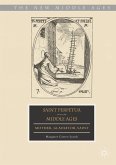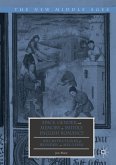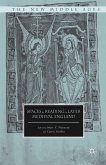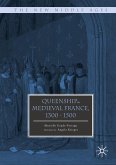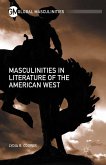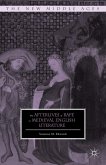This book, the first full-length cross-period comparison of medieval and modern literature, offers cutting edge research into the textual and cultural legacy of the Middle Ages: a significant and growing area of scholarship. At the juncture of literary, cultural and gender studies, and capitalizing on a renewed interest in popular western representations of the Islamic east, this book proffers innovative case studies on representations of cross-religious and cross-cultural romantic relationships in a selection of late medieval and twenty-first century Orientalist popular romances. Comparing the tropes, characterization and settings of these literary phenomena, and focusing on gender, religion, and ethnicity, the study exposes the historical roots of current romance representations of the east, advancing research in Orientalism, (neo)medievalism and medieval cultural studies. Fundamentally, Representing Difference invites a closer look at medieval and modern popular attitudes towards the east, as represented in romance, and the kinds of solutions proposed for its apparent problems.
Review 2: Myra Seaman, Professor of English, College of Charleston, USA
Report on 'Romancing Difference' (formerly 'Desiring Difference') As this manuscript is a revision of an earlier version that I reviewed in November 2014, I will rely on that report to convey my posive support for the project. Here I will focus primarily on how this revised version addresses some concerns I highlighted in that inial report. On the whole, the manuscript now much more fully accomplishes the aims the author delineates in the introducon. The previous version didn't contradict them in any way, but it leF some unfulfilled in its seeming hesitaon to pursue some of the compelling (and somemes ambiguous) implicaons it raised. The two key ways the author managed this in revision was by (a) providing previously withheld explanaon of how her conclusions are suggested by the data she provides in her analysis of the various modern and medieval texts and (b) presenng the reader in more direct detail the crical and theorecal ideas with which she was engaging in her analysis as it was previously presented. (A) has been improved throughout the manuscript, with (b) especially apparent in the revision of the Introducon. Indeed, the Introducon is now nearly twice its previous length, and I find the addions to have helpfully detailed the author's premises and aims for the project. It now gives the reader more extensive preparaon for the analyses to come in the individual chapters, inving the reader into the conversaons the author is having with other scholars in the form of this book-and it also provides a service to the field more broadly in its close engagement with a set of concerns currently at the forefront. The Introducon now provides an extended discussion of 'difference' in terms of medieval and modern cultures (in parcular race/ethnicity/religion), and traces engagements with it over the past quarter century, especially, within medieval studies, including postcolonial studies-and then extends that discussion to include gender and sexuality, which are oFen kept in a separate sphere from differences of race. This project reveals their interseconality in medieval and modern cultural products. This discussion of difference(s) prepares well for the focus on trends in cross - ?period analysis (and its connecons to postcolonialism and to a 'more theorised medievalism'). While reading the previous version I regularly wished for more overt assistance from the author as I made my way through her arguments. I am happy to see here much improved signposng of her argument-oFen in relaon to others'-as at the end of the secon introducing Bevis and geography in ch. 2 (pp. 41 - ?2). On the whole, this version presents the author's claims more directly and clearly (as at the top of p. 44). That kind of extension of the previous version can be seen throughout the manuscript. Another set of concerns I had revolved around a some terms that were important components of the argument's scaffolding but that weren't communicang as precisely as they might. The author has carefully clarified these and in some cases shiFed to different terms that lack the potenal problems I saw in previous selecons (such as 'the west'). As part of that 'correcon,' however, the author now makes extensive use of the term 'Saracen,' with which one can expect medievalists to have familiarity, but I wonder about those reading from a non - ?medieval perspecve. They would benefit from some early explanaon of the term. The author noted that she revised the conclusion extensively, and I appreciate that. These addions, though, would benefit from some further revision. I found myself struggling more here than at any other point in the (revised) book, trying to see how what I understood her to be saying there suited what I'd understood from my reading of the book to that point. In parcular, the more overt, direct connecon between the medieval and the modern-'the insidious persistence of the medieval in modern
Report on 'Romancing Difference' (formerly 'Desiring Difference') As this manuscript is a revision of an earlier version that I reviewed in November 2014, I will rely on that report to convey my posive support for the project. Here I will focus primarily on how this revised version addresses some concerns I highlighted in that inial report. On the whole, the manuscript now much more fully accomplishes the aims the author delineates in the introducon. The previous version didn't contradict them in any way, but it leF some unfulfilled in its seeming hesitaon to pursue some of the compelling (and somemes ambiguous) implicaons it raised. The two key ways the author managed this in revision was by (a) providing previously withheld explanaon of how her conclusions are suggested by the data she provides in her analysis of the various modern and medieval texts and (b) presenng the reader in more direct detail the crical and theorecal ideas with which she was engaging in her analysis as it was previously presented. (A) has been improved throughout the manuscript, with (b) especially apparent in the revision of the Introducon. Indeed, the Introducon is now nearly twice its previous length, and I find the addions to have helpfully detailed the author's premises and aims for the project. It now gives the reader more extensive preparaon for the analyses to come in the individual chapters, inving the reader into the conversaons the author is having with other scholars in the form of this book-and it also provides a service to the field more broadly in its close engagement with a set of concerns currently at the forefront. The Introducon now provides an extended discussion of 'difference' in terms of medieval and modern cultures (in parcular race/ethnicity/religion), and traces engagements with it over the past quarter century, especially, within medieval studies, including postcolonial studies-and then extends that discussion to include gender and sexuality, which are oFen kept in a separate sphere from differences of race. This project reveals their interseconality in medieval and modern cultural products. This discussion of difference(s) prepares well for the focus on trends in cross - ?period analysis (and its connecons to postcolonialism and to a 'more theorised medievalism'). While reading the previous version I regularly wished for more overt assistance from the author as I made my way through her arguments. I am happy to see here much improved signposng of her argument-oFen in relaon to others'-as at the end of the secon introducing Bevis and geography in ch. 2 (pp. 41 - ?2). On the whole, this version presents the author's claims more directly and clearly (as at the top of p. 44). That kind of extension of the previous version can be seen throughout the manuscript. Another set of concerns I had revolved around a some terms that were important components of the argument's scaffolding but that weren't communicang as precisely as they might. The author has carefully clarified these and in some cases shiFed to different terms that lack the potenal problems I saw in previous selecons (such as 'the west'). As part of that 'correcon,' however, the author now makes extensive use of the term 'Saracen,' with which one can expect medievalists to have familiarity, but I wonder about those reading from a non - ?medieval perspecve. They would benefit from some early explanaon of the term. The author noted that she revised the conclusion extensively, and I appreciate that. These addions, though, would benefit from some further revision. I found myself struggling more here than at any other point in the (revised) book, trying to see how what I understood her to be saying there suited what I'd understood from my reading of the book to that point. In parcular, the more overt, direct connecon between the medieval and the modern-'the insidious persistence of the medieval in modern


